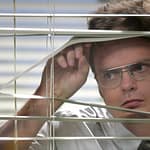In a world that’s rapidly evolving, the notion of a ‘workplace’ has transitioned from merely being a location where tasks get done to a space where individuals grow, connect, and flourish. Yet, beneath the surface of every task, deadline, or meeting lies a fundamental truth: the wellbeing of an employee is paramount.
In this article, we’ll explore the profound connection between occupational health and the holistic wellness of employees. We’ll uncover the transformative power of wellness programs, the magic of championing mental and physical health, and the importance of building a safety-centric environment.
The Human Side of Workplace Wellness
Occupational health isn’t just about ticking boxes and meeting regulations – it’s deeply intertwined with the happiness, safety, and spirit of every employee.
As employers, we don’t just have a rulebook to follow – we carry the moral and ethical weight of making sure everyone walks into a workspace where their wellbeing is cherished. Overlooking this can have tangible consequences, from legal repercussions to the deeper, more personal costs of decreased joy, morale, and commitment in our teams.
Embracing Wellbeing at Work
Nowadays, more and more companies are weaving wellness right into the fabric of their work culture. Why? Because they’ve recognised that to truly flourish, their employees need more than just a paycheck.
They need health and happiness. And that’s where occupational health and wellness programs come into play, offering everything from fun fitness challenges and check-ups, to enlightening health workshops.
The Ripple Effect of Workplace Wellness
Here’s a little secret: wellness initiatives are a win-win. For starters, they can significantly trim down those soaring healthcare bills by emphasising preventive care and reducing the dash to the doctor. But the magic doesn’t stop there.
These programs can be a mood-lifter, sparking joy, job satisfaction, and that special spark that makes employees give their best. And let’s not forget: in an age where company image is king, a reputation for caring about employee wellbeing can be a magnet for the brightest minds.
Championing Whole Employee Wellness
In any thriving workplace, the heart and soul lies in its people. So, when we talk about occupational health and wellness, we’re really talking about cherishing each individual’s wellbeing – both of the mind and the body. Let’s delve deeper into how we can nurture both facets
Cultivating Mental Wellness
In today’s fast-paced world, mental wellbeing isn’t a luxury; it’s a necessity. Every workplace has its pressures, and sometimes, these can spiral into stress, anxiety, or even depression.
But, as employers, we can be torchbearers of positive change by giving everyone a compass to mental health tools and supportive services; reminding everyone that it’s okay – and vital – to pause, breathe, and recharge; embracing flexible work rhythms that honor personal lives as much as professional commitments; and building a haven where open chats, understanding, and mutual respect are the norm.
When mental wellness is championed, workplaces don’t just see happier faces. They witness a surge in passion, creativity, and commitment. According to Protex AI’s explanation on behavior based safety, safe workplaces are happy workplaces, and employees who feel safe are more likely to be engaged and productive.
Nourishing Physical Wellbeing
A healthy mind needs a healthy body to reside in. As stewards of our team’s wellbeing, we can light the path to fitness corners or holistic wellness adventures; seed the idea of regular stretches, walks, or even mid-day dance breaks; fill the pantry with nutritious nibbles and energising drinks; and craft workspaces where every chair, desk, and tool is a pledge to comfort and care.
When we celebrate physical health, we’re not just cutting down sick days. We’re amplifying energy, zest, and zeal in the workplace.
Building a Safety-First Work Environment
Risk Assessment: Laying the Groundwork
Every safety journey starts with understanding what we’re up against. That’s where a risk assessment comes into play. By keenly observing the surroundings, revisiting past incidents, and most importantly, lending an ear to what employees have felt and faced, we can pinpoint where potential dangers lurk.
And here’s a practical tip: sometimes, it helps to get an outside perspective. For instance, if electrical hazards are a concern, consulting a professional electrician in Madison, MS can shed light on areas we might overlook.
After gathering this information, it’s crucial to not just file it away but use it as a blueprint. Document the findings, map out actionable steps, and set clear timelines to turn those plans into reality.
Turning Insights into Actions
Armed with the knowledge from the risk assessment, it’s action time. This could mean equipping team members with protective gear like gloves or goggles, ensuring they’re shielded from potential harm. Or it might translate to reengineering certain spaces – think barriers to keep risks at bay or ventilation systems ensuring breathable, safe air.
But, gears and gadgets aside, knowledge is the most potent tool. Regular training sessions – ones that cover everything from the basics of lifting without straining one’s back, to swift action during emergencies, to mastering the art of using protective equipment – are invaluable.
In the end, the goal is simple: a workplace where every individual can focus on their tasks, knowing they’re protected and cherished. And with the right measures, that goal isn’t just achievable – it’s right within reach.
The Heartbeat of Every Workplace
In the tapestry of today’s corporate landscape, one thread remains constant – the undeniable importance of human wellbeing. We’ve traveled through the avenues of mental and physical health, dived into the significance of safety, and unraveled the myriad benefits of workplace wellness. It’s evident: A thriving, dynamic workplace is not gauged merely by its output but by the joy, safety, and growth it offers to every individual.
Author: Emily Hill – Freelance Writer
Photo credit: Armin Rimoldi




